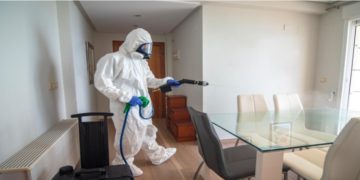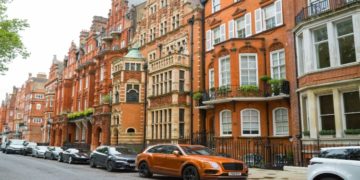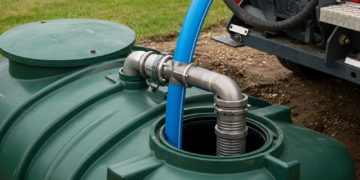Home refurbishment is an assurance of a new life and better place to live in, and it also opens the door to the most unwanted visitor: mold. Knowing the reasons why renovations are commonly associated with mold issues and the ways to avoid them will save you thousands of money in remediation and save your family health.
Mold is conditionally dependent on moisture and organic substances and suitable temperatures, which renovations may unwillingly provide or aggravate. You think the air in the building and add new sources of moisture, or undermine ventilation in your home, you are basically laying out the welcome mat to the existing breed of spores in every home that are referred to as molds. According to a company for mold reduction in Miami, mold can grow in your bathrooms, basements, attics, behind drywall or any other place that lacks proper ventilation. Moreover, water leakage can also cause mold to grow.
The reason why Renovations Provide the Ideal Conditions of Mold.
Moisture Introduction
Renovations usually entail the introduction of water in your home in different ways. Plumbing may cause little leakages that will not be detected behind the walls. Moisture is added to indoor air through the concrete work, laying of tiles, and painting. Even processes that appear dry such as sanding can result in condensation when temperature and sand are introduced together.
Hacking into Existing Content.
During the demolition process, the settled mold spores are disrupted and they are airborne and can travel to other places within your home. By removing old carpet, walls, or even stripping paint, the potential result is that you will be exposing latent mold colonies that have been growing within months or years undetected.
Mold spores can be found even in the materials that seem to be clean. Organic materials that drywall, insulation and wood framing are all organic materials that are fed upon by molds. When such materials are subjected to moisture during renovation, inactive spores may easily become active and start growing.
Defective Building Envelope.
Renovations can be a prerequisite that assumes you do openings in either your exterior walls, roof or foundation. Even temporary openings are able to provide moisture in spaces that were previously covered. Without proper weather protection or proper sealing up of the openings that have been created it may take a long time after the renovation is finished before the water returns.
During the construction, there was poor ventilation.
Work on constructions produces dust, debris and moisture that must be well ventilated. Most of the contractors are preoccupied with getting the job over within a short period without necessarily considering air quality management. This may cause damp stuffy air that promotes the growth of molds in the workplace and other surrounding areas.
Kitchen Renovations
Kitchen remodeling is usually associated with plumbing which can create moisture issues. Installation of dishwasher and refrigerator involves connections of water lines which can leak. The wall can be caught by the moisture and this is possible when there is no proper upkeep of the vapor barriers by installing the cabinets.
Partially renovated kitchen cooking may also lead to overproduction of humidity that is not handled carefully because of the damaged ventilation systems.
Basement Finishing
Basement renovations are especially likely to have mold problems due to the natural increased humidity and reduced air flow in the basement. Incorporating finished surfaces on concrete walls may trap moisture and the lack of proper vapor barriers may result in the liquidity of the ground seeping into the newly used materials.
The floods that occur during the construction process, either due to the addition of plumbing mishaps, or due to the external water filling, may saturate the new materials before they have a chance to dry in the correct way.
Whole-House Renovations
Renovation on a large scale generates numerous moisture problems at a time. Organizing waterproofing of various trades becomes more complicated, and provisional conditions can last long enough and ensure that mold has enough time to develop.
Renovation Prevention Before You begin.
Pre-Renovation Mold Inspection.
Professional mold inspection Before any significant renovation commences, have the mold inspected by an expert. This provides a baseline requirement and determines any mold issues that may exist that should be dealt with prior to the onset of construction. Any effort to remodel on top of already existing mold issues is bound to aggravate them and increase the cost of their removal.
Keep records of documents including photographs and reports. This would help someday when you have mold problems and you have to know whether they were already there or as a result of renovation.
Formulate Moisture Management Plan.
Develop a detailed strategy on how to handle moisture during your reno. This would entail measures of protecting materials against weather, managing moisture associated with construction and appropriate ventilation.
Find out the possible sources of moisture in your renovation zone such as plumbing, HVAC systems, and exterior building envelope penetrations. Arrange how each one of them will be guarded or controlled in construction.
Select Resistant to Mold Materials.
Whenever you can, use building materials that are resistant to molds. Most applications can use mold resistant drywall, insulation and flooring. Although these materials are a little bit more expensive in the short-run, they offer protection against the problems of molds in the long-run.
Think of the use of such materials, as ceramic tile, sealed concrete and metal framing at high moisture locations. These materials do not give food sources to molds and they are also easier to clean and maintain.
Plan for Proper Ventilation
Make sure you have proper ventilation of your building construction and that of the work done as well as the completed area. This can involve the use of temporary ventilation systems during the construction and ultimate ventilation upgrades on the planned renovation.
Determine ventilation needs depending on the size and the purpose of renovated spaces. Minimal requirements are offered by building codes, however, best mold prevention may entail higher than minimum requirements.










































































